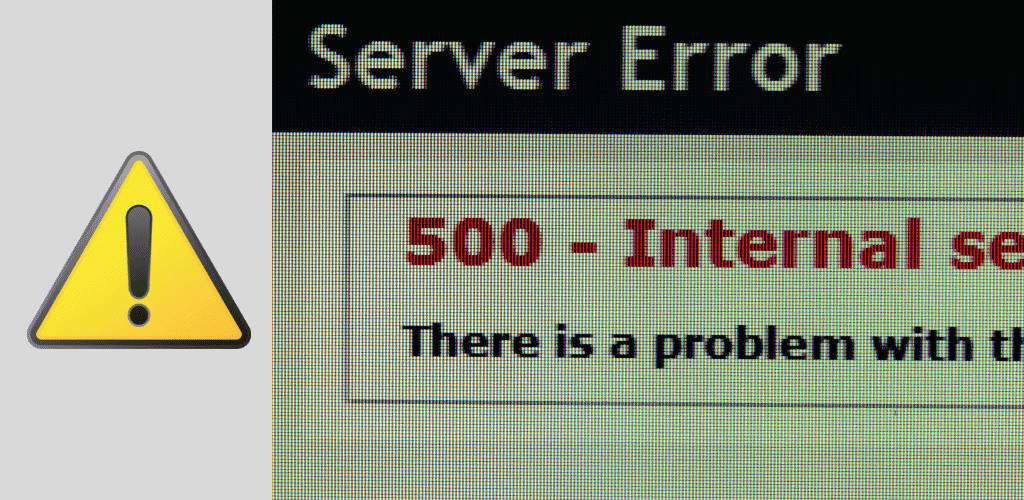Ever wondered how your browser magically finds the right website when you type in a web address? That’s DNS in computer network doing its job behind the scenes. DNS, or Domain Name System, acts like the internet’s phone book, translating human-friendly website names into the IP addresses that computers actually use to connect.
This guide is for anyone who wants to understand what is DNS and how it works – from curious beginners to IT professionals looking to brush up on DNS fundamentals. Whether you’re troubleshooting connection issues, optimizing network performance, or just want to know what happens when you click “enter” in your browser, we’ll break it down in simple terms.
We’ll walk through the complete DNS resolution process step-by-step, showing you exactly how your request travels from your device to the right server. You’ll also discover the key differences between authoritative DNS servers and recursive DNS servers, plus learn practical DNS troubleshooting techniques and security best practices to keep your network running smoothly.
Ready to uncover how this essential internet technology really works? Let’s dive in.
Table of Contents
Understanding DNS Fundamentals and Core Components
What is DNS in Computer Network and why it converts domain names to IP addresses
What is DNS in computer networks is fundamentally a translation service that bridges the gap between human-readable domain names and machine-readable IP addresses. The Domain Name System (DNS) turns domain names into IP addresses, which browsers use to load internet pages. This conversion process is essential because while humans prefer memorable names like “google.com” or “facebook.com,” computers and network devices communicate using numerical IP addresses.
Every device connected to the internet has its own IP address, used by other devices to locate it. These IP addresses consist of strings of numbers that would be virtually impossible for average users to memorize and use effectively. Imagine trying to remember 172.217.164.110 instead of simply typing “google.com” – the internet would be far less accessible and user-friendly without this translation system.
DNS fundamentals center around this critical conversion process that happens seamlessly behind the scenes every time you type a web address. When you enter a domain name in your browser, the DNS system automatically translates that human-friendly name into the corresponding IP address, allowing your device to establish a connection with the target server. This process eliminates the need for users to memorize complex numerical sequences while maintaining the precise addressing system that computers require for network communication.
How DNS servers act as the internet’s phonebook system
DNS acts like a phonebook for the internet, finding the correct IP address when a domain name is typed. This analogy perfectly captures how the DNS in computer network infrastructure operates – just as you would look up someone’s phone number in a traditional phonebook by searching for their name, DNS servers look up IP addresses by searching for domain names.
DNS servers allow people to input normal words (domain names) into browsers without tracking IP addresses. This phonebook-like functionality makes the internet accessible to billions of users who don’t need to understand the underlying technical complexities. When you type a website address, DNS servers instantly search through their vast directories to find the matching IP address, much like flipping through a phonebook to find a specific phone number.
The phonebook comparison extends further when considering the distributed nature of DNS infrastructure. Just as phone directories are organized by regions and updated regularly, DNS servers are distributed globally and continuously updated to ensure accurate information. This distributed approach ensures that DNS queries can be resolved quickly regardless of your geographic location, maintaining the internet’s speed and reliability.
The efficiency of this phonebook system becomes apparent when you consider the scale – DNS servers handle billions of queries daily, translating domain names to IP addresses in milliseconds. This rapid lookup process enables the seamless browsing experience users expect when navigating between websites.
The four essential DNS server types that work together
A typical DNS query involves four servers: DNS recursor, root nameservers, TLD nameservers, and authoritative nameservers. These four DNS server types work in coordinated sequence to complete the DNS resolution process, each playing a specific role in translating domain names to IP addresses.
The DNS recursor serves as the first point of contact, acting like a librarian who receives your query and knows where to find the information. When you type a domain name, your request first reaches the DNS recursor, which then initiates the search process on your behalf. This server is typically provided by your Internet Service Provider or a third-party DNS service.
Root nameservers represent the top level of the DNS hierarchy, functioning like an index in a library that points you to the right section. These servers don’t contain the specific IP address information you need, but they know which Top-Level Domain (TLD) nameserver can help with your query based on the domain extension (.com, .org, .net, etc.).
TLD nameservers are responsible for specific domain extensions and act like specific sections in a library. When your query involves a .com domain, the TLD nameserver for .com domains knows which authoritative nameserver contains the detailed information for that specific domain name.
Authoritative nameservers provide the final answer, containing the actual IP address associated with the domain name you requested. These servers are like the specific book on a library shelf that contains the exact information you need. They hold the definitive records for particular domains and provide the IP address that your browser needs to establish a connection.
This four-server system ensures DNS fundamentals operate efficiently through a hierarchical structure that distributes the workload and maintains the internet’s scalability while providing fast, accurate responses to domain name queries.
Complete DNS Resolution Process Explained

Step-by-step journey from URL entry to website loading
The DNS resolution process in computer networks follows a systematic approach that transforms human-readable domain names into machine-readable IP addresses. When a user types a URL into their browser, this action triggers a complex sequence of communications between multiple DNS servers to locate the correct IP address.
The journey begins the moment a user enters a website URL. At this point, the DNS server initiates the process by finding the corresponding IP address for the website’s URL. This translation is essential because while users prefer memorable domain names, computers and network infrastructure communicate using numerical IP addresses.
For complete DNS resolution to occur, a URL typed by a user must go through four distinct servers for the IP address to be provided. However, if the information is cached from previous queries, the recursive server can send the IP address directly, significantly reducing response time. Once the DNS server finds the IP address, browsers use it to send data to CDN edge servers or origin servers, allowing user access to website information.
How DNS recursor initiates and manages the query process
The DNS recursor, also known as the DNS resolver, serves as the primary coordinator in the DNS resolution process. The DNS recursor receives the query from the DNS client and communicates with other DNS servers to find the right IP address. This component acts as the intermediary between the user’s device and the broader DNS infrastructure.
What makes the DNS recursor particularly efficient is its dual functionality. The resolver then acts as a client itself, making queries to the root nameservers, TLD nameservers, and authoritative nameservers. This recursive behavior allows it to systematically work through the DNS hierarchy until it obtains the required IP address information.
The recursor’s role extends beyond simple query forwarding. It manages the entire resolution process, maintaining communication with multiple server types, handling timeouts and retries, and ultimately delivering the final result back to the requesting client. This centralized management ensures that the DNS resolution process remains organized and efficient.
Role of root nameservers in directing traffic flow
Root nameservers occupy the highest level in the DNS hierarchy and play a crucial role in the initial stages of DNS resolution. The root nameserver is designated for the internet’s DNS root zone, answering requests by returning a list of authoritative nameservers for the correct TLD.
When the DNS recursor contacts a root nameserver, it doesn’t receive the final IP address directly. Instead, root nameservers function as traffic directors, pointing the resolver toward the appropriate Top-Level Domain (TLD) nameservers based on the domain extension in the query. This hierarchical approach ensures that DNS queries are systematically routed through the appropriate channels.
The root nameservers’ primary responsibility involves maintaining knowledge of which TLD nameservers are responsible for specific domain extensions such as .com, .org, .net, or country-specific extensions. This directing function is essential for maintaining the organized structure of the global DNS system.
TLD nameservers and their IP address management function
TLD nameservers represent the next level in the DNS hierarchy and handle queries for specific top-level domains. A TLD nameserver maintains the IP address of the second-level domain within the TLD name, then releases the website’s IP address and sends the query to the domain’s nameserver.
These specialized servers focus on managing domain information within their designated TLD scope. When a TLD nameserver receives a query from the DNS recursor, it examines the second-level domain portion of the request and determines which authoritative nameserver is responsible for that specific domain.
The TLD nameserver’s IP address management function ensures that queries are properly routed to the final destination in the DNS resolution chain. By maintaining accurate records of which authoritative nameservers handle specific domains within their TLD, these servers enable the systematic progression toward complete DNS resolution.
Authoritative vs Recursive DNS Servers: Key Differences

Understanding the distinction between authoritative DNS servers and recursive DNS servers is crucial for comprehending how DNS in computer network operations function effectively. These two server types serve fundamentally different roles in the DNS resolution process, each with specific responsibilities that ensure seamless domain name translation.
How Authoritative Servers Store and Provide DNS Records
Authoritative nameservers function as the definitive source of DNS information, essentially operating as a comprehensive ‘phone book’ that connects IP addresses with their corresponding domain names. These servers store and maintain DNS records for specific domains and regions, keeping detailed lists of domain names alongside their associated IP addresses.
When queries arrive from recursive DNS nameservers, authoritative servers provide definitive answers containing the exact IP addresses of the requested domains. What makes these servers truly authoritative is their ability to give the ‘real answer’ to any DNS query – they don’t guess or approximate, but deliver the actual, verified information.
The architecture of authoritative DNS servers includes two primary types: master (primary) and slave (secondary) nameservers. The master nameserver maintains the original DNS records and serves as the primary source of truth for domain information. Meanwhile, the slave nameserver operates as an exact copy of the master server, sharing the processing load and functioning as a crucial backup system. This dual-server approach ensures redundancy and improved performance, as the slave can seamlessly take over if the master experiences any issues.
Authoritative nameservers are responsible for specific geographical regions and domain zones, ensuring that DNS information remains organized and accessible. Their role is purely informational – they respond to requests but don’t initiate queries themselves.
Why Recursive Servers Act as Middlemen for End Users
Now that we have covered how authoritative servers function, let’s explore the critical intermediary role of recursive DNS servers. A recursive server acts as a sophisticated middleman positioned strategically between the authoritative server and the end-user, facilitating smooth communication in the DNS resolution process.
When users type a URL into their browser, the recursive server springs into action, ‘recursing’ through the entire DNS tree structure to access the required domain records. This process involves systematically querying multiple authoritative servers until the complete domain resolution is achieved. Rather than burdening end users with the complexity of navigating the DNS hierarchy, recursive servers handle this intricate process seamlessly.
The recursive nature of these servers means they don’t simply pass along requests – they actively pursue the information by following the DNS chain from root servers down to the specific authoritative servers that hold the requested domain information. This comprehensive approach ensures that users receive accurate, complete responses regardless of how complex the domain structure might be.
The Caching Mechanism That Speeds Up Repeat Queries
With this understanding of server roles in mind, the caching mechanism represents one of the most significant performance optimization features in DNS systems. When recursive DNS servers successfully retrieve IP address information, they store this data in their cache memory for future reference.
This caching strategy dramatically improves response times for repeat queries. If a previously resolved IP address exists in the recursive server’s cache memory, the server immediately sends this information to the browser without needing to contact authoritative servers again. This process eliminates the time-consuming steps of traversing the DNS tree repeatedly for the same domain requests.
The caching mechanism benefits both individual users and the overall DNS infrastructure by reducing network traffic and server load while providing faster access to frequently visited websites.
DNS Performance Optimization Through Caching

Now that we have covered the fundamental aspects of DNS resolution, it’s time to explore one of the most critical performance enhancement mechanisms in DNS architecture: caching. DNS caching serves as a powerful optimization technique that dramatically reduces lookup times and minimizes the load on DNS servers across computer networks.
How Browser and OS Caching Reduces Lookup Times
Browser and operating system (OS) caching forms the first line of defense against repetitive DNS queries, storing DNS resource records locally to prevent redundancy and significantly reduce website loading times. When your browser or operating system encounters a domain name that requires resolution, it first checks its local cache before initiating any network requests.
The efficiency of this caching mechanism becomes apparent when considering user browsing patterns. If a device recently accessed a particular webpage, the cached IP address can fulfill subsequent requests without involving a DNS server, streamlining the entire DNS lookup process. This local resolution capability eliminates network latency entirely for cached entries, resulting in near-instantaneous domain name resolution.
OS caching operates at the system level, maintaining a comprehensive local copy of DNS lookups that enables quick resolution of URLs to IP addresses across all applications running on the device. This system-wide cache benefits not just web browsers but any application that requires domain name resolution, creating a unified performance boost for the entire computing environment.
The impact on user experience is substantial. Instead of waiting for multiple network round trips to various DNS servers, cached entries provide immediate responses, reducing page load times from hundreds of milliseconds to mere microseconds. This dramatic improvement in DNS resolution speed directly translates to faster website loading and enhanced overall network performance.
Time to Live (TTL) Settings and Their Impact on Performance
The effectiveness of DNS caching heavily depends on Time to Live (TTL) settings, which determine how long cached DNS records remain valid before requiring refresh. Domain owners configure these TTL values to balance between performance optimization and the ability to make timely updates to their DNS records.
Recursive DNS servers store IP addresses for specific durations defined by these TTL settings. When a DNS record reaches its TTL expiration, the cached entry becomes invalid, forcing the next query to retrieve fresh information from authoritative servers. This mechanism ensures that DNS changes propagate across the network while maintaining caching benefits.
Longer TTL values enhance performance by keeping DNS records cached for extended periods, reducing the frequency of DNS server queries. However, this comes with the trade-off of slower propagation when DNS changes need to occur. Conversely, shorter TTL values enable rapid updates but increase the load on DNS infrastructure due to more frequent cache refreshes.
When Cached Data Eliminates the Need for DNS Server Queries
The most significant performance gains from DNS caching occur when cached data completely eliminates the need for external DNS server queries. This scenario represents the optimal state of DNS performance optimization, where local resolution handles all domain name requests without network communication.
When browsers and operating systems maintain fresh cached entries, the traditional DNS resolution process involving recursive and authoritative servers becomes unnecessary. The local cache serves as a complete DNS solution for frequently accessed domains, creating a zero-latency resolution environment.
This elimination of server queries provides multiple benefits beyond speed improvements. It reduces bandwidth consumption, decreases the load on DNS infrastructure, and provides resilience against network connectivity issues. Even during temporary network outages, cached DNS entries continue to function, maintaining access to previously visited websites.
The cumulative effect of widespread DNS caching creates a more efficient internet ecosystem. As more devices maintain comprehensive local caches, the overall demand on DNS servers decreases, improving response times for queries that do require server interaction. This distributed caching approach scales naturally with internet usage patterns, making DNS caching an essential component of modern network performance optimization.
Choosing the Right DNS Server for Your Needs

Now that we have covered how DNS performance optimization works through caching, let’s explore the critical decision of selecting the most suitable DNS server for your specific requirements. The choice of DNS provider can significantly impact your internet experience, security posture, and overall network performance.
Top public DNS providers: Cloudflare, Google, and Quad9
When evaluating DNS providers, three major players dominate the public DNS landscape, each offering distinct advantages tailored to different user needs and technical expertise levels.
Cloudflare DNS (1.1.1.1) stands out for its exceptional ease of use and comprehensive educational resources. This provider has built a reputation for making DNS configuration accessible to users of all technical backgrounds through detailed tutorials and straightforward setup guides. One of Cloudflare’s notable features is its content blocking capabilities, which help protect users from malicious websites and unwanted content at the DNS level. The service prioritizes user privacy and offers robust security features while maintaining simplicity in implementation.
Google Public DNS (8.8.8.8) targets a more technically sophisticated audience, providing advanced features and configuration options that appeal to network administrators and tech-savvy users. This service is designed with the assumption that users have a deeper understanding of DNS fundamentals and network configuration, offering more granular control over DNS resolution processes. Google’s extensive infrastructure ensures reliable performance and global availability.
Quad9 has earned recognition for delivering exceptionally fast performance while simultaneously blocking access to malicious sites. This provider combines speed optimization with proactive security measures, automatically preventing users from accessing known malicious domains. Quad9’s focus on threat intelligence and real-time protection makes it an excellent choice for users prioritizing both performance and security in their DNS resolution.
Free vs paid DNS services: feature comparison
While regular users typically find free public DNS services sufficient for their daily internet activities, paid DNS services offer substantial benefits that justify the investment for businesses and advanced users with specific requirements.
Free DNS services provide basic functionality including standard DNS resolution, global server networks, and fundamental security features. These services work well for general browsing, streaming, and typical internet usage patterns without additional cost considerations.
Premium DNS services, however, deliver enhanced value through expanded feature sets and guaranteed service levels. The investment in paid DNS becomes worthwhile when reliability, advanced features, and dedicated support become critical business requirements.
Advanced features like Dynamic DNS and secondary DNS protection
Paid DNS services distinguish themselves through sophisticated features designed for professional and enterprise environments. Dynamic DNS (DDNS) functionality addresses the challenge of mapping constantly changing IP addresses to domain names, making it invaluable for businesses with dynamic IP configurations or remote access requirements.
Secondary DNS protection provides crucial redundancy and backup systems that guard against domain downtime. This feature ensures continuous availability even when primary DNS servers experience outages or technical issues, maintaining business continuity and preventing revenue loss from website inaccessibility.
Additional premium features include comprehensive management interfaces with intuitive dashboards for monitoring and configuration, two-factor authentication for enhanced account security, and superior performance guaranteed through Service Level Agreements (SLAs). These services also provide dedicated customer service support, ensuring rapid resolution of technical issues and professional assistance with complex configurations.
With this in mind, the selection of appropriate DNS services should align with your specific performance requirements, security needs, and technical expertise level.
Troubleshooting Common DNS Problems

Now that we have covered the fundamentals of DNS servers and their optimization, it’s crucial to understand how to identify and resolve common DNS issues that can disrupt network connectivity. DNS troubleshooting is an essential skill for network administrators and users alike, as these problems can significantly impact internet accessibility and application performance.
Understanding “DNS server not responding” error messages
The message ‘DNS server isn’t responding’ is one of the most frequently encountered DNS errors, indicating that an attempt to communicate with the designated DNS server failed to return a result. This error essentially means your computer cannot establish communication with the DNS server to translate domain names into IP addresses, effectively blocking your access to websites and online services.
This troublesome error can stem from multiple underlying causes, each requiring different approaches to resolve. A weak or unstable internet connection represents one of the primary culprits, where intermittent connectivity issues prevent consistent communication with DNS servers. When your network connection experiences packet loss or high latency, DNS queries may timeout before receiving responses.
Outdated DNS settings present another common source of this error. When DNS server configurations become stale or point to non-functional servers, resolution attempts will consistently fail. Similarly, an outdated browser can contribute to DNS resolution problems, particularly when browser-specific DNS caching mechanisms malfunction or when outdated network stacks interfere with proper DNS communication.
Server-side issues also frequently trigger this error message. DNS server problems can arise from various infrastructure failures, including power loss at the server’s data center, hardware malfunctions, network congestion, or scheduled maintenance periods. These server-side problems are beyond user control but understanding their potential impact helps in determining appropriate troubleshooting approaches.
How to perform DNS lookups using command line tools
With this understanding of common DNS errors, effective DNS troubleshooting requires proficiency with command line diagnostic tools. On Windows computers, DNS lookups can be performed using the NSLOOKUP command through the command prompt, providing detailed insights into DNS resolution processes and server responses.
The NSLOOKUP process follows specific steps for comprehensive DNS analysis. First, access the command prompt by typing “cmd” in the Windows search bar or pressing Windows + R and entering “cmd”. Once the command prompt opens, type NSLOOKUP and press Enter to initiate the DNS lookup utility. This launches an interactive mode where you can configure various lookup parameters.
To specify the type of DNS record you want to query, use the command ‘set type=A’ for standard address records, though you can modify this for other record types like MX for mail servers, NS for name servers, or CNAME for canonical names. After setting the record type, enter the domain name you wish to investigate and press Enter to view the corresponding record entries.
For discovering your current DNS configuration on Windows computers, type ‘ipconfig/all’ in the command prompt. This comprehensive command displays detailed network configuration information, including the DNS servers currently assigned to your network interfaces. This information proves invaluable when diagnosing DNS-related connectivity issues.
Identifying connection issues vs server problems
Previously, we’ve established that DNS errors can originate from either client-side connection problems or server-side infrastructure issues. Distinguishing between these categories is essential for implementing appropriate troubleshooting strategies and determining whether problems require user intervention or simply patience while server issues resolve.
Connection issues typically manifest through inconsistent DNS resolution, where some queries succeed while others fail, indicating network instability rather than complete DNS server failure. These problems often correlate with general internet connectivity issues, where other network services also experience intermittent problems. Testing connectivity to multiple DNS servers can help identify whether the issue stems from your local connection or specific server problems.
Server problems, conversely, tend to affect all DNS queries consistently, regardless of the domain being resolved. When DNS servers experience power loss at their data centers or other infrastructure failures, all resolution attempts through those servers will fail uniformly. These issues typically resolve automatically once server administrators address the underlying problems, though switching to alternative DNS servers can provide temporary relief.
Understanding these distinctions enables more efficient troubleshooting approaches, helping users avoid unnecessary configuration changes when server-side issues are responsible for DNS problems.
DNS Security Considerations and Best Practices

Now that we have covered DNS fundamentals and troubleshooting techniques, it’s crucial to understand the security challenges that can compromise your DNS infrastructure. DNS security represents one of the most critical aspects of network protection, as vulnerabilities in this system can expose your entire network to malicious attacks and data breaches.
Understanding DNS cache poisoning and spoofing threats
DNS cache poisoning, also known as DNS spoofing, involves introducing corrupt DNS data into a resolving device’s cache, leading the nameserver to return the wrong IP address. This sophisticated attack method represents one of the most dangerous threats to DNS in computer network environments, as it can redirect legitimate traffic to malicious servers without users’ knowledge.
The mechanics of DNS cache poisoning work by exploiting vulnerabilities in the DNS resolution process. When an attacker successfully injects false information into a DNS cache, all subsequent queries for that domain will receive the corrupted response until the cache expires or is manually cleared. This creates a window of opportunity for cybercriminals to:
- Redirect web traffic to phishing sites that mimic legitimate services
- Intercept sensitive data including login credentials and financial information
- Distribute malware through compromised domains
- Conduct man-in-the-middle attacks by positioning themselves between users and legitimate services
The impact of DNS spoofing extends beyond individual users, affecting entire networks and organizations. When a recursive DNS server’s cache becomes poisoned, all users relying on that server will receive incorrect responses, potentially exposing thousands of users to security risks simultaneously.
Understanding these threats is essential for implementing effective DNS security best practices. Organizations must recognize that traditional security measures may not adequately protect against DNS-based attacks, as these threats operate at the foundational level of internet communication.
Benefits of private DNS for enhanced security
A private DNS can offer enhanced security compared to other DNS options, providing organizations with greater control over their DNS infrastructure and improved protection against various threats. Private DNS solutions create a controlled environment where DNS queries and responses can be monitored, filtered, and secured according to specific organizational requirements.
The enhanced security benefits of private DNS include:
- Controlled query resolution that prevents unauthorized access to internal resources
- Reduced exposure to public DNS vulnerabilities and attacks
- Custom filtering capabilities that block access to malicious domains
- Enhanced monitoring of DNS traffic patterns and potential threats
- Improved data privacy by keeping DNS queries within the organization’s infrastructure
Private DNS implementations allow organizations to maintain complete visibility over their DNS traffic, enabling rapid detection of suspicious activities or potential security breaches. This level of control is particularly valuable for enterprises handling sensitive data or operating in regulated industries where compliance requirements demand strict security measures.
Two-factor authentication and additional protection layers
Paid DNS servers provide an additional layer of protection, shielding websites from attackers through advanced security features and enterprise-grade infrastructure. Two-factor authentication is an advanced feature offered by some paid DNS services, providing an extra level of authentication to protect your domain from unauthorized modifications and malicious activities.
The implementation of two-factor authentication in DNS management adds a critical security barrier that significantly reduces the risk of account compromise. This authentication method requires users to provide two different forms of verification:
- Something you know (password or passphrase)
- Something you have (mobile device, hardware token, or authenticator app)
Additional protection layers available through premium DNS services include:
- DDoS protection that filters malicious traffic before it reaches your servers
- Advanced threat intelligence that identifies and blocks emerging threats
- Real-time monitoring with automated alerts for suspicious activities
- Encrypted DNS queries using DNS over HTTPS (DoH) or DNS over TLS (DoT)
- Redundant infrastructure that ensures continuous availability during attacks
These enhanced security features work together to create a comprehensive defense system that protects against both common and sophisticated DNS attacks. Organizations investing in premium DNS services gain access to security expertise and infrastructure that would be costly to develop and maintain internally.
With this in mind, implementing robust DNS security measures requires a multi-layered approach that combines technical solutions with proper administrative controls and ongoing monitoring to ensure optimal protection against evolving threats.
FAQ’s
What is DNS and why is it used?
DNS stands for Domain Name System, which acts as the internet’s phonebook by translating human-readable domain names into IP addresses that computers can understand. Think of it as a massive directory that helps your computer find the right destination when you type a website URL.
When you enter “google.com” in your browser, your computer doesn’t naturally know where to find Google’s servers. The DNS system bridges this gap by converting that friendly domain name into an IP address like 172.217.14.196. This translation happens behind the scenes in milliseconds, making web browsing seamless and user-friendly.
DNS serves several critical purposes in computer networks. First, it eliminates the need to memorize complex IP addresses. Instead of remembering 172.217.14.196, you simply type “google.com.” Second, DNS provides flexibility for website owners. They can change their server’s IP address without affecting the domain name users know and trust. Third, DNS enables load balancing by distributing traffic across multiple servers, improving website performance and reliability.
The system also supports email delivery through MX records, which tell email servers where to send messages for specific domains. Without DNS, modern internet communication would be virtually impossible, as users would need to memorize numerical addresses for every website they wanted to visit.
What are the 4 types of DNS?
DNS operates through four main types of servers, each playing a specific role in the domain name resolution process:
Recursive DNS Servers act as intermediaries between your device and other DNS servers. When you request a website, your device typically contacts a recursive resolver first. These servers handle the entire lookup process on your behalf, querying multiple other servers until they find the answer. Popular recursive DNS services include Google DNS (8.8.8.8) and Cloudflare DNS (1.1.1.1).
Root Name Servers sit at the top of the DNS hierarchy and contain information about top-level domains like .com, .org, and country codes. There are 13 logical root server clusters distributed globally, managed by different organizations. These servers don’t contain specific website information but direct queries to the appropriate top-level domain servers.
Top-Level Domain (TLD) Servers manage information for specific domain extensions. For example, .com TLD servers handle all .com domains, while .org servers manage .org domains. These servers know which authoritative name servers are responsible for specific domains within their extension.
Authoritative Name Servers contain the definitive DNS records for specific domains. When someone registers a domain, they designate authoritative servers that hold the actual IP addresses and other DNS records for that domain. These servers provide the final answer in the DNS lookup chain.
Each server type works together in a hierarchical system, creating a distributed database that ensures reliable and efficient domain name resolution across the global internet infrastructure.
What is DNS and its work?
DNS functions as a distributed database system that translates domain names into IP addresses through a systematic resolution process. The system operates on a hierarchical structure, starting from root servers and working down to authoritative servers for specific domains.
When you type a web address, the DNS resolution process begins immediately. Your computer first checks its local DNS cache to see if it already knows the IP address. If not, it contacts your configured DNS resolver, typically provided by your internet service provider or a public DNS service.
The resolver begins by querying a root name server, which responds with information about the appropriate TLD server. The resolver then queries the TLD server, which provides details about the authoritative name server for the requested domain. Finally, the resolver contacts the authoritative server, which returns the actual IP address.
DNS caching plays a crucial role in system performance. Once an IP address is found, it’s stored temporarily at multiple levels – in your browser, operating system, router, and DNS resolvers. This caching prevents repeated queries for the same information, significantly speeding up subsequent visits to the same websites.
The system also handles different types of DNS records beyond simple IP address lookups. A records point to IPv4 addresses, AAAA records handle IPv6 addresses, MX records direct email traffic, and CNAME records create domain aliases. This versatility makes DNS essential for various internet services beyond web browsing.
How do I fix a DNS server problem?
DNS problems can manifest in several ways, from websites not loading to error messages about server unavailability. Troubleshooting these issues involves systematic steps to identify and resolve the underlying cause.
Start by checking your internet connection to ensure the problem isn’t broader connectivity. Try accessing different websites to determine if the issue affects all sites or just specific ones. If only certain sites are affected, the problem likely lies with those particular servers rather than your DNS configuration.
Flush your DNS cache to clear potentially corrupted or outdated entries. On Windows, open Command Prompt as administrator and type ipconfig /flushdns. Mac users should run sudo dscacheutil -flushcache in Terminal. This step often resolves issues caused by cached incorrect information.
Change your DNS servers if flushing doesn’t work. Switch from your ISP’s default DNS servers to public alternatives like Google DNS (8.8.8.8 and 8.8.4.4) or Cloudflare DNS (1.1.1.1 and 1.0.0.1). These services often provide better reliability and performance than ISP-provided options.
Restart your network equipment including your modem and router. Unplug them for 30 seconds, then reconnect them in order – modem first, then router. This process can resolve temporary configuration issues or connection problems.
Check your firewall and antivirus settings as these programs sometimes block DNS requests or interfere with network connections. Temporarily disable them to test if they’re causing the problem, but remember to re-enable protection afterward.
For persistent issues, contact your internet service provider, as the problem might stem from their DNS infrastructure or broader network problems affecting your area.
Conclusion
DNS serves as the fundamental backbone of internet communication, translating human-readable domain names into IP addresses that computers can understand. Throughout this exploration, we’ve uncovered how DNS resolution works through the coordinated efforts of recursive resolvers, root nameservers, TLD nameservers, and authoritative nameservers. Understanding the differences between authoritative and recursive servers, along with the critical role of caching in performance optimization, empowers you to make informed decisions about your network infrastructure.
The choice of DNS server significantly impacts your browsing experience, security, and overall network performance. Whether you opt for reliable public options like Cloudflare’s 1.1.1.1 or Google’s 8.8.8.8, or invest in premium DNS services with advanced features, proper DNS configuration and security practices are essential. As cyber threats continue to evolve, implementing DNS security measures and staying vigilant against issues like DNS cache poisoning will help protect your digital presence and ensure reliable internet connectivity.







